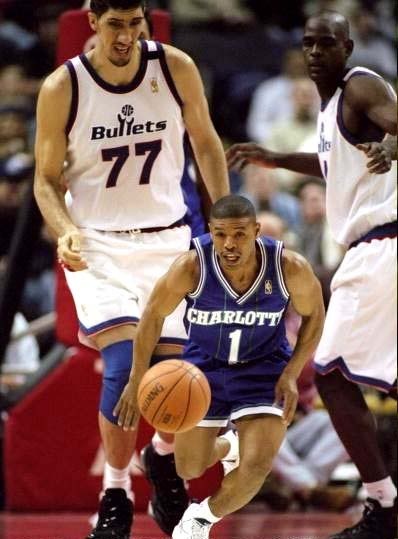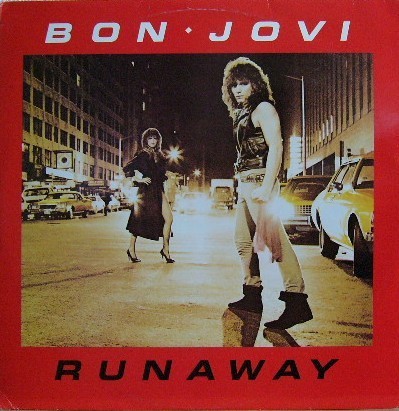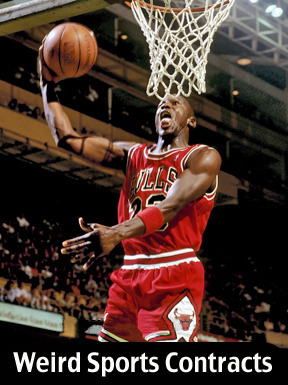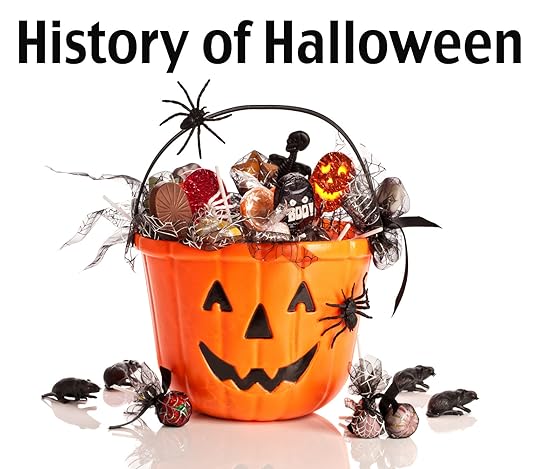Bathroom Readers' Institute's Blog, page 157
November 8, 2013
7 Quick Facts About Roses
All about the most famous, prominent, symbolic, and revered
flower in the Western world: the rose.
 • Humans began cultivating roses only about 5,000 years ago, in China and the Far East. But they’ve been used and enjoyed by humans for much longer than that. Ancient Egyptian mummies have been discovered wearing rose wreaths. Fossilized rose remnants have been found that date back 35 million years.
• Humans began cultivating roses only about 5,000 years ago, in China and the Far East. But they’ve been used and enjoyed by humans for much longer than that. Ancient Egyptian mummies have been discovered wearing rose wreaths. Fossilized rose remnants have been found that date back 35 million years.
• A rosebush blooms on the wall of Hildesheim Cathedral in Germany. It started growing at about the same time the church was built, around 1010, making it the oldest living rosebush on the planet.
• In the early 1800s, Empress Josephine of France engineered the first modern-day “rose garden.” She had a lofty goal—a sample of every rose variety in the world. Her gardens at the Malmaison château housed 250 varieties of roses—helped along by a standing order to the French Navy to confiscate any rose plants or seeds found on enemy ships.
• Josephine’s garden made rose growing and collecting very popular in western Europe. In the mid-1800s, gardeners figured out how to crossbreed roses, to combine, for example, one rose’s color with another’s heartiness. The first major hybrid rose: “La France,” developed by grower Jean-Baptiste Andre Guillot in 1867. Today there are over 10,000 hybrid rose varieties.
• While it probably didn’t have every rose in the world, Josephine’s was the largest rose collection in the world until the opening and rapid growth of the Europa-Rosarium in Sangerhausen, Germany, in 1902. As of 2013, it houses 75,000 rose varieties.
• The world’s largest rosebush is in Tombstone, Arizona. It’s a white “Lady Banks” planted in 1886. Its trunk is six feet in diameter, and its branches form a canopy that covers nearly 9,000 square feet.
• One of the most famous rose gardens in the world is the White House Rose Garden, site for speeches, press conferences, and entertaining important guests. It hasn’t always been there. The White House had a glass greenhouse in the 19th century, where flowers and fruit were grown. It fell into disuse by 1900 and was removed in 1902, prompting First Lady Edith Roosevelt to install a garden just off the Oval Office. It was converted into a strictly rose garden in 1913 by First Lady (and landscape architect) Edith Wilson.
November 7, 2013
3 Real-Life Replicas of Cartoon Houses
Ink-and-paint brick-and-mortar in the flesh and blood!
The Simpsons house (Henderson, Nevada)
In the mid-’90s, a group of video game designers at Fox Interactive teamed-up with an architect to construct a replica of the Simpsons’ home. The 2,200-square-foot house was completed in 1997 and it originally contained many features and decorations in order to make it look exactly like the one on The Simpsons—albeit in three dimensions. There was even a sailboat painting over the couch, and corncob curtains in the kitchen window, and some Duff Beers in the fridge.
The house, placed in a quiet neighborhood in a suburb of Las Vegas, was later given away in a contest, but the winner opted for a $75,000 cash prize instead of the house. More than 30,000 people visited the house in 1997 (including Simpsons creator Matt Groening who signed one of the walls with purple paint), but neighbors weren’t too pleased with all the tourist traffic. The house was repainted and most of the details related to the show were removed before it was sold in 2001.
The Flintstones house (Malibu, California)
On a 23-acre spread overlooking the Pacific Ocean sits this modest, one-bedroom, two-bathroom house made out of composite materials that look like stone. In fact, it looks exactly like the house Fred and Wilma lived in on The Flintstones. While it looks like it’s from the Stone Age (or at least the TV cartoon version of the Stone Age), the kitchen is modern, and unfortunately doesn’t have a sarcastic boar for a garbage disposal or a woolly mammoth for a faucet. Show business entrepreneur Dick Clark, bought the house in 1989, and never lived in it, but put it up for sale shortly before his death in 2012 for $3.5 million. No takers—it’s still for sale.
The Up houses (California, Utah)
To date, two real-life reproductions of the famous balloon-powered floating home from Pixar’s Up have been built. In March 2011, a crew working for the National Geographic Channel constructed a lightweight version in the high desert east of Los Angeles for a segment on the show “How Hard Can It Be?” to see if it was actually possible to lift a house with balloons. They successfully managed to send it airborne after attaching the roof to 300 helium-filled weather balloons. The house flew for over an hour.
A more detailed, and stationary, Up house can be found at 13215 S. 5390 West in Herriman, Utah. In addition to looking just like the one in the movie, there’s even a mailbox out front stamped with the names and handprints of Carl and Ellie, just like in the movie. The four-bedroom, 2,800-square-foot house was originally intended to serve as a tourist attraction, but the builders sold it to two self-described “Pixar fanatics” for $400,000.
November 6, 2013
Tallest, Shortest, Biggest, Smallest, Youngest, Oldest: NBA Edition
The new NBA season has begun, so here’s a statistical survey of sports sizes.
 Tallest: Romanian-born Gheorghe Muresan center, at 7’7”. He came to the NBA after playing professionally in France. Drafted by the Washington Bullets in 1993, he averaged a respectable 9.8 points over his seven-year NBA career, as well as 1.5 blocks. However, Muresan is probably best known for his of-court activities—he starred in the 1998 movie My Giant with Billy Crystal (Muresan played the giant).
Tallest: Romanian-born Gheorghe Muresan center, at 7’7”. He came to the NBA after playing professionally in France. Drafted by the Washington Bullets in 1993, he averaged a respectable 9.8 points over his seven-year NBA career, as well as 1.5 blocks. However, Muresan is probably best known for his of-court activities—he starred in the 1998 movie My Giant with Billy Crystal (Muresan played the giant).
Shortest: Tyrone “Muggsy” Bogues played in the NBA from 1987 to 2001, despite being just 5’3” tall. Being small in the NBA means being fast, and Bogues was adept at assists and steals—he’s the Charlotte Hornets’ all-time leader in both categories.
Biggest: Featuring players who are routinely more than seven feet tall, the NBA is naturally going to have players who weigh a lot. However, only 12 players in league history have ever weighed more than 300 pounds. Among that group are Jerome “Big Snacks” James, Robert “Tractor” Traylor, and Charles Barkley. The heaviest player in NBA history: Oliver Miller, who played for five teams in the 1990s and weighed 375 pounds.
Smallest: At 5’7”—a full foot under league average, and two full feet shorter than Gheorghe Muresan—Spud Webb is tied for fourth place on the list of shortest-ever NBA players. But he’s the lightest player in league history, weighing just 133 pounds. Despite his small stature, however, Webb surprised the basketball world by beating Michael Jordan and Dominique Wilkins in the 1986 NBA Slam Dunk Contest.
Youngest: In 2005, the Los Angeles Lakers drafted a high school senior named Andrew Bynum. He skipped college ball and entered the NBA less than a week after his 18th birthday.
Oldest: Only 21 NBA players have ever hit the court after their 40th birthdays. Nat Hickey was the oldest. Playing for the Providence Steamrollers in the early years of the NBA, he played his final game in January 1948, three days shy of his 46th birthday. To put that in perspective, the average coach in the NBA today is 49.
November 5, 2013
Weird Invention: Here Comes the Fake Sun
A low-tech/high-tech cure for the winter blues for a city that is is cut off from direct sunlight for five to six months a year.
As the days grow shorter and the nights get colder, a little sunshine can be hard to come by. It’s especially true in Rjukan, a small town in Norway. Because of a nearby, imposing mountain chain, the area doesn’t receive any direct sunlight from September until March.
Seven months of near darkness can get anybody down, as well as deprived of Vitamin D. Fortunately for the residents of Rjukan, there’s a high-tech cure for the wintertime blues.
Nearly seven months of that kind of gloom can get anybody down, even Vitamin D deprived Norwegians that are accustomed to harsh winters. Fortunately for the residents of Rjukan, there’s a solution. At a cost of 5 million Norwegian Kroner (roughly $841,000 in US dollars), three 183-square foot mirrors were installed on a cliff overlooking the town. On clear days – which are unable to discern from the ground in Rjukan – the mirrors reflect the sunlight down into the town square.
If this solution sounds simple – reflecting light – it is, because it was conceived of by Norwegian engineer Sam Eyde in the 1910s. It didn’t pan out until 2005, when local artist Martin Andersen started promoting the idea, drumming up financial support for what he called “The Mirror Project.” They were finally delivered and put in place by helicopters last summer before being given a test spin in early September. Sure enough, they work. With their powers combined, the mirrors blast 656 square feet of sunlight down onto Rjukan.
The light isn’t as powerful as direct sunlight and it can lose as much as 20% of its intensity in the process. Still, that’s better than the alternative. Prior to the mirrors, Rjukan’s residents had to ride a cable car to the top of a nearby precipice to see the sun during the winter months.
The mirrors had their grand unveiling on October 30th. During the ceremony, a local band played, appropriately enough, “Let the Sunshine In.”
November 4, 2013
3 Famous Bands With A “Silent Partner”
Sometimes the band includes more than just the guys on stage. Here’s a look at rock music’s most notable band members…who aren’t really part of the band.
Hugh McDonald, Invisible Bassist
 Jon Bon Jovi assembled his hard rock band, Bon Jovi, in 1983, which included bassist Hugh McDonald, who played on the group’s first single “Runaway.” The song was a local hit, and when the group got a record deal, Bon Jovi replaced some of his band members, including McDonald, with a new bass player, Alec John Such. Except…he really didn’t. Such was credited as the bass player on five multi-million-selling Bon Jovi albums, but it was really McDonald who was playing. Why was Such, who was reportedly not as accomplished a musician as McDonald, presented as Bon Jovi’s bassist? McDonald was a decade older than Jon Bon Jovi, Such, and the other members of the band. When the band became teen idols in the 1980s, youth (and youthful looks) were important, and McDonald didn’t fit that profile. In 1994, McDonald “replaced” Such, both in concert and on record.
Jon Bon Jovi assembled his hard rock band, Bon Jovi, in 1983, which included bassist Hugh McDonald, who played on the group’s first single “Runaway.” The song was a local hit, and when the group got a record deal, Bon Jovi replaced some of his band members, including McDonald, with a new bass player, Alec John Such. Except…he really didn’t. Such was credited as the bass player on five multi-million-selling Bon Jovi albums, but it was really McDonald who was playing. Why was Such, who was reportedly not as accomplished a musician as McDonald, presented as Bon Jovi’s bassist? McDonald was a decade older than Jon Bon Jovi, Such, and the other members of the band. When the band became teen idols in the 1980s, youth (and youthful looks) were important, and McDonald didn’t fit that profile. In 1994, McDonald “replaced” Such, both in concert and on record.
Don Airey, Invisible Keyboardist
Airey has played keyboards for the biggest acts in heavy metal, including Rainbow, Black Sabbath, and for Ozzy Osbourne’s solo career. Airey played on Osbourne’s 1981 album Blizzard of Ozz, and Osbourne asked him to be a part of the ensuing concert tour. But on one condition: Airey couldn’t be on stage. Although Airey’s keyboards featured prominently on Blizzard, Osbourne didn’t think keyboards were a very “metal” instrument. So he planned to keep Airey backstage, unseen to the audience and even the rest of the band. Airey refused that arrangement, so he and Osbourne compromised: Airey would play from inside a special area on the stage set where he and the band could see each other…but the audience couldn’t see Airey.
Darryl Jones, Ignored Bassist
In 1993, the Rolling Stones announced that longtime bassist and original member Bill Wyman was leaving the group after more than 30 years. Drummer Charlie Watts selected a new bass player for the band: Darryl Jones, who had toured with and played concerts with major acts, including Sting, Cher, Miles Davis, Eric Clapton, and Herbie Hancock. But Jones was never and has never been Wyman’s “official” replacement or even an official member of the band. He’s paid a hefty salary to tour with the band and play on their albums, but he’s listed as a collaborator, not band member. Even though he’s now been with the Rolling Stones for 20 years, Jones doesn’t share in the band’s royalties.
November 1, 2013
Mysteries of the Gas Station: Solved!
The answers to those things you think about while you wait for your tank to fill up.
Why are gas prices listed with a “9/10” afterward?
 Because they make more money that way. The price for a gallon of gas listed, $3.49 9/10, is rounded up to the next penny. But most customers don’t pay any attention to that fraction, focusing instead on the standard three-digit price, falling for a classic psychological trick that makes customers think they’re paying slightly less for something than they really are. It’s the same psychology behind why things that cost 99 cents “feel” so much cheaper than something that costs $1.
Because they make more money that way. The price for a gallon of gas listed, $3.49 9/10, is rounded up to the next penny. But most customers don’t pay any attention to that fraction, focusing instead on the standard three-digit price, falling for a classic psychological trick that makes customers think they’re paying slightly less for something than they really are. It’s the same psychology behind why things that cost 99 cents “feel” so much cheaper than something that costs $1.
The fractional pricing practice began during the Great Depression. To save money, people were driving less, and the demand for gasoline. Gas station chains introduced premiums to attract customers, such as free glasses, candy, and ashtrays, for example. Another way a gas station could differentiate itself from the competition: lower prices. Undercutting the other guy by even a fraction of a cent was enough to lure customers. The 9/10th became permanent in the 1970s. During that decade’s oil crisis and subsequent gas shortage, the federal government stepped in to regulate gas prices, setting them with elaborate but precise formulas, which often ended in 9/10ths. The idea simply became a part of American life after that.
What’s the difference between full service and mini service?
Full servicee involves a gas station attendant, who comes out to your car, asks how much gas you want, takes your money, and pumps it for you. They may also offer minor services, like cleaning off your windshield or checking your oil levels (but you may have to ask). Mini-service is just another name for “self serve”—you pump your own. Usually, because of the extra labor involved, full service costs a bit more per gallon. Two states, however, have no real difference between full service and mini service: In Oregon and New Jersey, it’s illegal for gas station customers to pump their own gas.
Holiday Sale 2013: Commence!
It is the happiest time of the year! You guessed it—our annual Holiday Sale is finally here! This sale is the BEST Uncle John’s value of the year, and we have a great selection of new and classic releases to choose from, including our 26th EDITION, Uncle John’s Perpetually Pleasing Bathroom Reader.
Here’s what you need to know:
• The Sale: From November 1st, 2012 to January 1st, 2013, everything in our online store is 30% off! Plus, get FREE standard shipping for orders of $35 or more! (Enter code HOL13SHIP when checking out to apply free shipping.)
• Unfortunately, our store can only process US orders. We apologize for the inconvenience.
• Handy, dandy guide to our newest releases:
Uncle John’s Perpetually Pleasing Bathroom Reader
Uncle John’s Bathroom Reader Weird Canada
Uncle John’s iFlush: Hurtling Thru History Bathroom Reader for Kids Only!
Uncle John’s The Haunted Outhouse Bathroom Reader for Kids Only!
Uncle John’s Funniest Ever Bathroom Reader
Uncle John’s Smell-O-Scopic Bathroom Reader for Kids Only!
Uncle John’s Bathroom Reader Weird Inventions
Uncle John’s Bathroom Reader Zipper Accidents
October 31, 2013
It’s Devil’s Night!
Today is Halloween, but the tricks started yesterday with Devil’s Night.
Falling on October 30th, Devil’s Night is also known as “Mischief Night,” “Cabbage Night,” or “Hell Night.” No matter what it’s called, it’s probably the nastiest holiday in Europe and North America.
Serving as a mean-spirited counterpart to the more innocent traditions of Halloween, Devil’s Night is celebrated by pulling pranks instead of “tricks.” It’s also a lot newer than the medieval festivals that gave way to Halloween. Devil’s Night began in 1790 as Mischief Night. A headmaster of St. John’s College at Oxford put on a play, followed by an “Ode to Fun,” which encouraged students to play pranks (like throwing cabbages at houses). Students obliged and it became an annual tradition…in early May. In the 19th century, the night switched to the evening prior to Guy Fawkes Day, and finally settled on October 30th around the turn of the 20th century, which is also when the holiday spread to the U.S., particularly Detroit.
 Typically, the pranks are as harmless as covering a neighbor’s tree in toilet paper or smashing a few pumpkins. Things started getting out of hand in the ‘70s. In Detroit, Devil’s Night is marked by acts of major vandalism, property damage, and even arson. In 1984, for example, more than 800 fires were reported.
Typically, the pranks are as harmless as covering a neighbor’s tree in toilet paper or smashing a few pumpkins. Things started getting out of hand in the ‘70s. In Detroit, Devil’s Night is marked by acts of major vandalism, property damage, and even arson. In 1984, for example, more than 800 fires were reported.
After a particularly wild Devil’s Night in 1994, mayor Dennis Archer attempted to rebrand the holiday as “Angel’s Night.” In addition to increasing police patrols, he spearheaded a massive “citizens’ patrol” to protect Detroit’s streets. It worked. It’s become an annual tradition, with as many as 40,000 volunteers participating every year.
And, if you missed it, here is a quick history of Halloween.
October 30, 2013
3 Weird Sports Contracts
Sometimes creative accounting pays off. Here are a few examples of
weird sports contracts throughout history.
Heir Jordan
 Unlike their counterparts in the big leagues, the average first-year minor league baseball players is paid about $1,100 a month. But not Michael Jordan. After retiring from a spectacular basketball career in 1993 to give pro baseball a try, Jordan signed with the farm system of the Chicago White Sox. At the time, the White Sox organization was owned by Jerry Reinsdorf, who also owned Jordan’s old basketball team, the Chicago Bulls. Sensing that Jordan might come back to the NBA some day if baseball didn’t work out (it didn’t), Reinsdorf paid Jordan $4 million in 1994 and 1995 to play minor league baseball, the same he would’ve been paid had he stayed in the NBA.
Unlike their counterparts in the big leagues, the average first-year minor league baseball players is paid about $1,100 a month. But not Michael Jordan. After retiring from a spectacular basketball career in 1993 to give pro baseball a try, Jordan signed with the farm system of the Chicago White Sox. At the time, the White Sox organization was owned by Jerry Reinsdorf, who also owned Jordan’s old basketball team, the Chicago Bulls. Sensing that Jordan might come back to the NBA some day if baseball didn’t work out (it didn’t), Reinsdorf paid Jordan $4 million in 1994 and 1995 to play minor league baseball, the same he would’ve been paid had he stayed in the NBA.
Good Things Come to Those Who Wait
In the 1980s and early 1990s, Bobby Bonilla was a six-time all-star, hitting more than 200 home runs for several teams. By 1999, he was 36 years and old and his career was winding down, but the New York Mets still signed him to a multi-year contract. His play, however, was mediocre—appearing in only 60 games, he had 12 hits and a .160 batting average while also frequently getting into arguments with manager Bobby Valentine. At the end of the 1999 season, the Mets released Bonilla, which meant buying out the $5.9 million he had left on his contract. But rather than have that sum on a tight payroll, they offered Bonilla a deal, which he accepted: Defer payment of the $5.9 million until 2011, at which point he’d receive the first payment of $1.19 million a year, for 25 years. By 2035, Bonilla will have earned $29.75 million, far more than the $5.9 million he was due.
The 65-Year-Old Quarterback
Before Steve Young played quarterback for the San Francisco 49ers, won a Super Bowl, and was elected to the Pro Football Hall of Fame, he played for the Los Angeles Express of the USFL, a pro football league that briefly rivaled the NFL in the 1980s, before it went bankrupt in 1986. So how did an upstart league convince a top prospect to join it instead of the well-established NFL? Express owner J. William Oldenburg offered Young $36 million…paid out over 43 years. And it doesn’t matter that the USFL went bankrupt—Young had the contract insured, so he’s still getting paid. What’s more is that the contract’s annual payment increases over time. Young will earn $1 million in 2014, and by the time the contract is fulfilled in 2027, the then-65-year-old former quarterback will get $3 million a year.
October 29, 2013
History of Halloween
Halloween is Uncle John’s favorite holiday. Why? It’s the one day of the year he looks “normal!” Here’s a quick history of Halloween.
A NCIENT ORIGIN
The ancient Celts in the British Isles celebrated their new year on November 1. Their New Year’s festival was called Samhain (pronounced sow-wen), which means “summer’s end.” Early Christians adopted the festival in the seventh century A.D., making November 1 a celebration of saints and martyrs—hence the name All Saints’ Day or All Hallows’ Day. (Hallow comes from an Old English word meaning “holy.”) The night before All Saints’ Day was known as All Hallows’ Even (evening)— which was shortened to “Hallowe’en.”
ANCIENT MYSTERY
What’s Halloween’s connection to ghosts and costumes? No one’s sure, but historians offer these three possibilites.
Theory #1: The Ghosts Are Hungry!
On All Hallows’ Eve, evil spirits roamed the Earth in wild celebration, ready to greet the arrival of “their season”— the cold dark winter. And just for fun, they liked to frighten mortals. One way for scared humans to escape the demons was to offer them food and sweets. Another way was to dress up like spirits and roam around with them…hopefully going unnoticed. “That is what the ancient Celts did,” explains Francis X. Weiser in The Handbook of Christian Feasts and Customs, “and it is in this very form that the custom has come to us.”
Theory #2: It’s Visiting Day!
The Druids, a Celtic priest class, believed that spirits freely roamed the Earth on the new year—November 1—when the veil between this world and “the other side” was at its thinnest. People dressed up as ghosts so they could better interact with real ghosts. They’d trick the evil spirits by offering up a feast and then leading them out of town.
Theory #3: Hey! Go Find Your Own Body!
On All Hallows’ Eve, everyone who died the previous year would rise up to select a human body to inhabit until the next All Hallows’ Eve, when they would finally pass into the afterlife. To fool these unwanted ghosts, people disguised themselves as demons and paraded loudly through the streets. The scarier and crazier they acted, the better…because what ghost in his right mind would want to inhabit the body of a crazy demon?
MODERN HALLOWEEN
Although historians debate its origins, they all agree that Halloween came to the United States in the mid to late 1840s. When Irish immigrants fled the potato famine to build a better life in America, they brought the October 31 celebrations with them. By then most of the beliefs in spirits roaming the Earth had gone away, but giving people an excuse to dress up and act silly—that’s timeless!
Originally published in Uncle John’s Electrifying Bathroom Reader for Kids Only!







